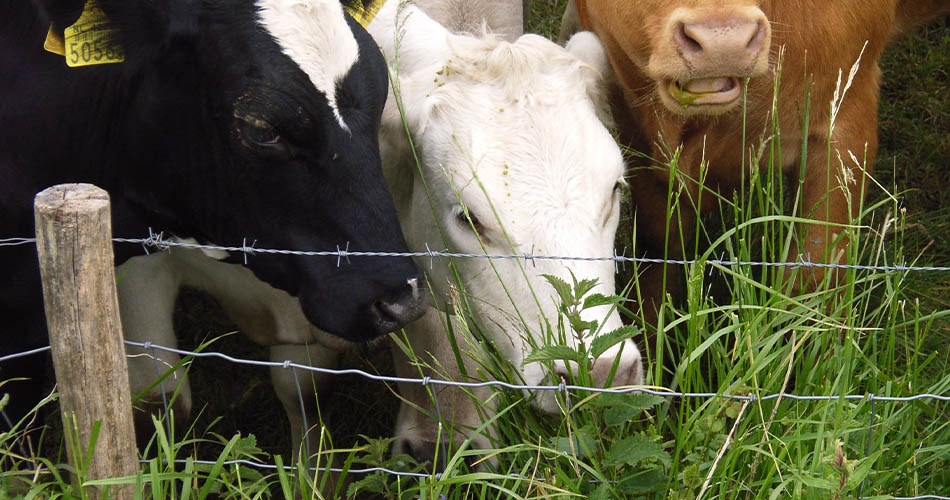Protecting Livestock From The Dangers Of Flooding

Table of Contents
Pre-Flood Planning and Prevention
Proactive planning is the cornerstone of effective livestock flood protection. By taking steps before a flood occurs, you dramatically increase your chances of minimizing losses and ensuring the safety of your animals.
Identifying Flood Risks
Assessing your farm's vulnerability to flooding is the first crucial step. This involves understanding your farm's specific risks.
- Utilize online flood risk maps: Many government websites offer detailed flood risk maps for your area. These maps identify areas with a high probability of flooding, allowing you to pinpoint potential problem spots on your farm.
- Consider historical flood data: Research past flood events in your region. Understanding the frequency and severity of past floods can help you gauge the potential impact on your farm.
- Proximity to rivers and waterways: Farms located near rivers, streams, or other bodies of water are at higher risk of flooding. Evaluate the distance of your livestock enclosures from these waterways.
- Drainage issues: Poor drainage on your farm can exacerbate flooding. Identify areas with inadequate drainage and consider implementing solutions such as drainage ditches or improved land grading.
- Identify high-risk areas and evacuation routes: Once you've assessed your risks, map out high-risk areas on your farm and plan multiple evacuation routes for your livestock. These routes should lead to higher ground or designated safe zones.
Building Secure and Elevated Housing
Investing in sturdy, elevated housing for your livestock is a critical aspect of livestock flood safety.
- Elevated structures: Design and build barns and shelters on higher ground, well above the expected flood level. This ensures your animals are safe even during significant flooding.
- Flood-resistant materials: When constructing or reinforcing structures, choose materials that can withstand floodwaters. Consider using materials like concrete or pressure-treated lumber.
- Reinforced structures: Ensure your barns and shelters are structurally sound and able to resist flood damage. Reinforce foundations and walls to prevent collapse.
- Elevated feeding and watering areas: Raising feeding and water troughs off the ground prevents contamination and makes them accessible even during a flood.
Developing an Evacuation Plan
A well-defined evacuation plan is crucial for ensuring the swift and safe relocation of your livestock during a flood.
- Designated escape routes: Establish clear, well-marked escape routes for your livestock. These routes should lead to safe, higher ground.
- Pre-identified holding areas: Identify potential holding areas with adequate space, sufficient food and water supplies, and proper shelter. These areas should be easily accessible and on high ground.
- Regular practice drills: Practice your evacuation plan regularly to ensure everyone on your farm is familiar with the procedures. This familiarity can save valuable time and reduce stress during an actual emergency.
- Essential supplies checklist: Prepare a list of essential supplies, including feed, water containers, halters, identification tags, first-aid kit for animals, and any necessary medications.
During a Flood Emergency
Swift action is paramount during a flood emergency. Monitoring weather forecasts and being prepared to act quickly is critical to protecting your livestock.
Immediate Actions
When flood warnings are issued, act immediately to protect your animals.
- Immediate relocation: Move your livestock to higher ground as soon as flood warnings are issued. Don't wait for the floodwaters to arrive.
- Secure loose objects: Secure any loose objects that could become dangerous during flooding, such as equipment or debris.
- Inspect fences: Check fences and secure any weaknesses that could allow livestock to escape. Reinforce weak points immediately.
Ensuring Animal Safety
During the flood, focus on keeping your animals safe and calm.
- Food and water: Provide adequate food and fresh, clean water. Ensure your animals have constant access to these essentials.
- Minimize stress: Keep animals calm and minimize stress. Loud noises and unfamiliar surroundings can exacerbate their distress.
- Separate animals: Separate animals based on their needs and temperaments, especially if some are more prone to panic.
- Rescue techniques: Be prepared to use appropriate rescue techniques for different types of livestock if necessary. This may involve using boats or other specialized equipment.
Personal Safety
Remember: your safety and the safety of your family are paramount. Never put yourselves at risk while trying to save your animals.
Post-Flood Recovery and Animal Care
After the floodwaters recede, focus on assessing the damage and caring for your livestock.
Assessing Damage and Livestock Condition
Carefully evaluate the situation after the flood.
- Veterinary assistance: Seek veterinary assistance for injured or stressed animals immediately. Prompt veterinary care is essential for minimizing long-term health problems.
- Clean and disinfect: Thoroughly clean and disinfect barns and pastures. Remove any debris or contaminated materials.
- Check feed and water: Check feed and water sources for contamination. Discard any contaminated supplies.
Disease Prevention and Treatment
Flooding creates ideal conditions for the spread of diseases.
- Vaccinations and medication: Provide appropriate medications and vaccinations to help prevent disease outbreaks.
- Hygiene and sanitation: Maintain strict hygiene and sanitation practices in barns and pastures.
- Monitor for illness: Monitor your animals closely for signs of illness or injury.
Long-Term Strategies
Learn from the experience and implement measures to reduce future flood risks.
- Improved drainage: Improve drainage systems on your farm to prevent water accumulation.
- Reinforce structures: Reinforce or rebuild any damaged structures using flood-resistant materials.
- Elevated pastures: Consider moving pastures to higher ground.
Conclusion
Protecting livestock from the dangers of flooding requires proactive planning, preparedness, and swift action during emergencies. By implementing the strategies outlined in this article, farmers can significantly reduce the risk of livestock loss and ensure the safety of their animals. Investing time and resources in flood prevention and emergency response plans is crucial for the long-term health and prosperity of your farm. Don't wait for a disaster—take action today to improve your livestock’s flood protection. Learn more about protecting livestock from the dangers of flooding by researching local resources and consulting with agricultural experts. Develop a comprehensive livestock flood safety plan to safeguard your animals and your livelihood.

Featured Posts
-
 Warriors Edge Rockets In Close Game 3 1 Series Lead
May 07, 2025
Warriors Edge Rockets In Close Game 3 1 Series Lead
May 07, 2025 -
 Kak Riana E Povliyala Na Tvorchestvoto Na Ed Shiyrn
May 07, 2025
Kak Riana E Povliyala Na Tvorchestvoto Na Ed Shiyrn
May 07, 2025 -
 Chinese Stocks Surge After Trading Halt Us Talks And Economic Data Drive Market Recovery
May 07, 2025
Chinese Stocks Surge After Trading Halt Us Talks And Economic Data Drive Market Recovery
May 07, 2025 -
 Pedro Pascal And Isabela Merced The Hype Surrounding Marvels Fantastic Four
May 07, 2025
Pedro Pascal And Isabela Merced The Hype Surrounding Marvels Fantastic Four
May 07, 2025 -
 The Unexpected Fallout Hollywoods Dream Of Restored Us Filmmaking Under Trump
May 07, 2025
The Unexpected Fallout Hollywoods Dream Of Restored Us Filmmaking Under Trump
May 07, 2025
Latest Posts
-
 March 29th Thunder Vs Pacers Complete Injury Update
May 08, 2025
March 29th Thunder Vs Pacers Complete Injury Update
May 08, 2025 -
 March 7th Nba Game Thunder Vs Trail Blazers Time Tv And Streaming
May 08, 2025
March 7th Nba Game Thunder Vs Trail Blazers Time Tv And Streaming
May 08, 2025 -
 March 7th Watch Thunder Vs Trail Blazers Live Game Time And Streaming Details
May 08, 2025
March 7th Watch Thunder Vs Trail Blazers Live Game Time And Streaming Details
May 08, 2025 -
 How To Watch Oklahoma City Thunder Vs Houston Rockets Game Preview And Betting Tips
May 08, 2025
How To Watch Oklahoma City Thunder Vs Houston Rockets Game Preview And Betting Tips
May 08, 2025 -
 How To Watch The Thunder Vs Trail Blazers Game On March 7th
May 08, 2025
How To Watch The Thunder Vs Trail Blazers Game On March 7th
May 08, 2025
